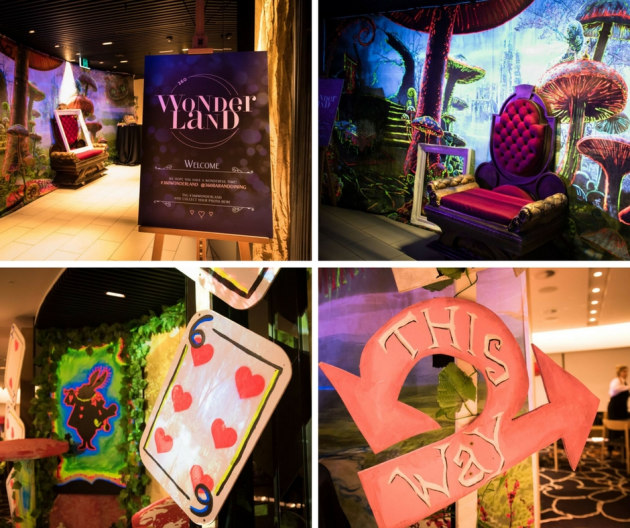
AdNews and innovation agency UDKU take a different look at how decision science can be applied to marketing in this series. Here, Arron Child looks at how decision sciences led to the agency creating an Alice in Wonderland-style dining experience.
People are hard-wired to remember stories. It’s how we have retained and passed on information since the birth of mankind. So we leveraged one of the most famous stories of all time to create a memorable dining experience utilising insight from decision sciences that resulted in a 100% ticket sales increase year on year.
Almost everyone is familiar with the whimsical story of Alice in Wonderland. So when we created a unique culinary experience together with 360 Bar and dining we knew that leveraging that well loved story would achieve two key things.
Vivid is an extremely cluttered time to launch anything (as there is so much competing for attention); so tapping into a story people are familiar with cuts through straightaway.
Secondly, if you're familiar with the Walt Disney cartoon, it will most likely conjure up all sorts of vivid imagery and sense of adventure. Suddenly, it’s not simply a fancy dinner anymore. The customer already has memories and expectations for the night ahead – and that's before they've even set foot in the door! This is what led to such a dramatic sales increase.
So – how did we do it?
We worked with the Head Chef, Elton Inglis, and Head Sommelier, Andres Aragon, at 360 Bar and Dining to implement the following behavioural science techniques:
Pay attention
One of the things the brain does is to make a prediction of an outcome, assume it’s right and move on to the next thing to conserve energy. When the outcome doesn’t match the prediction, the brain needs to go back and figure out what happened – essentially pay more attention to it.
It was important that we surprised guests from the outset and primed them for the night ahead. Upon arrival guests were greeted with a barrage of unexpected sensations - a rainforest smell, the sound of birds singing and projections of rainforests across the walls. Walls were lined with different food stations to challenge the diners’ predictions, such as beetroot and goats cheese macaroons. Characters in costume reiterated this throughout the night by telling guests “not everything is as it seems”.
Perception becomes reality
One of the signature dishes of the night was the seafood course. Studies have proven that when people are near the sea, seafood tastes fresher and better. To create this effect we projected video of the sea onto the walls and played sea sounds with waves crashing. Fog spilled onto the ground before the dish was brought out. Elements of the course were served in a sea urchin shell, with dry ice spilling out from under the plate to represent sea mist. All of these elements were designed to transport the diner close to the sea and thus enhance the flavour profile.
Fear the unknown
Three courses in, diners were told they were headed for danger. Safety goggles (blindfolds) were handed out and diners were told they must put them on quickly.
We heightened the sense of danger by changing the classical music to a ticking clock that sped up. The heart mimics the beat of the music you listen to. Speeding up the music and creating a sense of urgency was designed to illicit a sense of fear. When the clock reached the crescendo, the sound of glass shattering rung out over the speakers. When the body is under stress, it releases cortisol into the body. Cortisol heightens our senses and ensures we remember things more vividly.
Smell, sight and touch
Still blindfolded, guests were served three different dishes, each with a surprise flavour. We did this because we know that by suppressing one sense, others will be heightened, as the brain needs to rely on these senses for information. Once the three dishes had been served, blindfolds were lifted. For the first time in the night the curtains at STUDIO, Sydney Tower were lifted to reveal Sydney in all its glory and to fully engage the diners’ visual sense.
The three courses were also combined and plated with a glass lid, trapping the scent inside. Once opened, a powerful smoky aroma was released. The scent was the final piece de resistance for this course as new scents create a bookmark in the brain and help the brain recall the experience more vividly.
It never ceases to amaze me how our brains interpret the world, how this influences us, and how this all happens often without us realising.
As we learned from Alice in Wonderland, nothing is as it seems.
Read more from the decision science series here:
Advertising remembered by design, not by chance
Method to madness: Making ads for Airtasker
Great sportsmen don’t need to think, and neither do your customers





